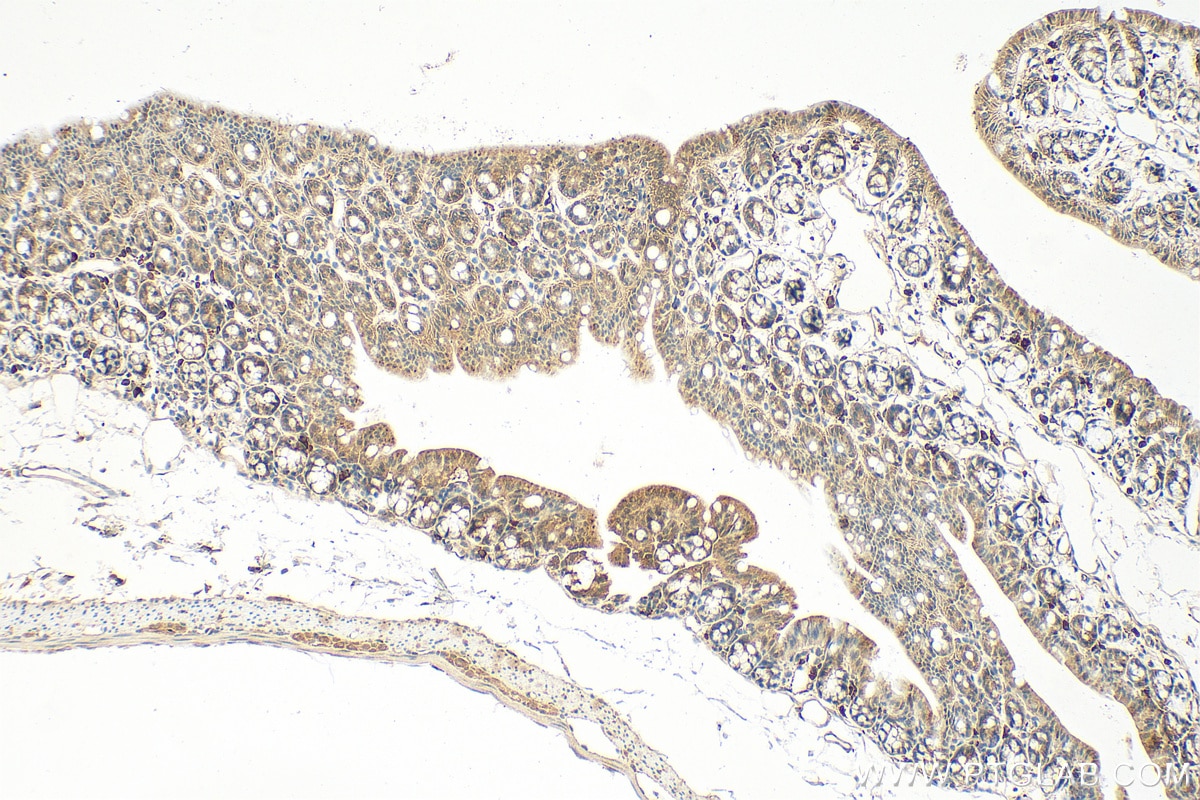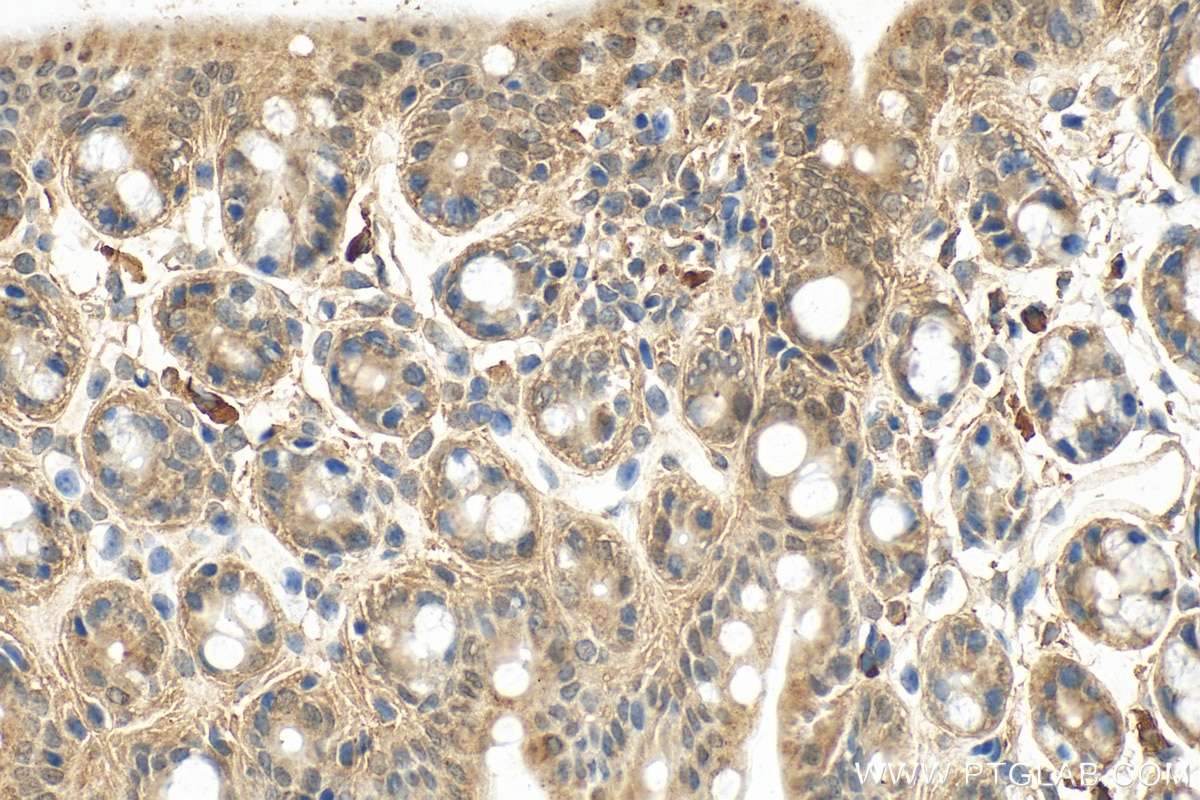Tested Applications
| Positive WB detected in | Jurkat cells |
| Positive IHC detected in | mouse colon tissue Note: suggested antigen retrieval with TE buffer pH 9.0; (*) Alternatively, antigen retrieval may be performed with citrate buffer pH 6.0 |
Recommended dilution
| Application | Dilution |
|---|---|
| Western Blot (WB) | WB : 1:500-1:1000 |
| Immunohistochemistry (IHC) | IHC : 1:400-1:1600 |
| It is recommended that this reagent should be titrated in each testing system to obtain optimal results. | |
| Sample-dependent, Check data in validation data gallery. | |
Published Applications
| KD/KO | See 1 publications below |
| WB | See 2 publications below |
| IHC | See 1 publications below |
Product Information
27875-1-AP targets EGLN3 in WB, IHC, ELISA applications and shows reactivity with human, mouse samples.
| Tested Reactivity | human, mouse |
| Cited Reactivity | human, mouse |
| Host / Isotype | Rabbit / IgG |
| Class | Polyclonal |
| Type | Antibody |
| Immunogen |
CatNo: Ag27464 Product name: Recombinant human EGLN3 protein Source: e coli.-derived, PGEX-4T Tag: GST Domain: 1-115 aa of BC010992 Sequence: MPLGHIMRLDLEKIALEYIVPCLHEVGFCYLDNFLGEVVGDCVLERVKQLHCTGALRDGQLAGPRAGVSKRHLRGDQITWIGGNEEGCEAISFLLSLIDRLVLYCGSRLGKYYVK Predict reactive species |
| Full Name | egl nine homolog 3 (C. elegans) |
| Calculated Molecular Weight | 27 kDa |
| Observed Molecular Weight | 27 kDa |
| GenBank Accession Number | BC010992 |
| Gene Symbol | EGLN3 |
| Gene ID (NCBI) | 112399 |
| RRID | AB_3086001 |
| Conjugate | Unconjugated |
| Form | Liquid |
| Purification Method | Antigen affinity purification |
| UNIPROT ID | Q9H6Z9 |
| Storage Buffer | PBS with 0.02% sodium azide and 50% glycerol, pH 7.3. |
| Storage Conditions | Store at -20°C. Stable for one year after shipment. Aliquoting is unnecessary for -20oC storage. 20ul sizes contain 0.1% BSA. |
Background Information
EGLN3, also named as HPH-1, HIF-PH3, HPH-3 and PHD3, is a cellular oxygen sensor that catalyzes, under normoxic conditions, the post-translational formation of 4-hydroxyproline in hypoxia-inducible factor (HIF) alpha proteins. It hydroxylates a specific proline found in each of the oxygen-dependent degradation (ODD) domains (N-terminal, NODD, and C-terminal, CODD) of HIF1A. It is a regulator of cardiomyocyte and neuronal apoptosis. EGLN3 can be a prognostic marker for gastric cancer.
Protocols
| Product Specific Protocols | |
|---|---|
| IHC protocol for EGLN3 antibody 27875-1-AP | Download protocol |
| WB protocol for EGLN3 antibody 27875-1-AP | Download protocol |
| Standard Protocols | |
|---|---|
| Click here to view our Standard Protocols |
Publications
| Species | Application | Title |
|---|---|---|
Sci Rep Mechanism of action for Troxerutin targeting the sialylation-related gene EGLN3 for the treatment of LUAD
| ||
Stem Cell Res Ther The mechanism of telomerase Cajal body protein 1 regulating senescence of mouse bone marrow mesenchymal stem cells |








